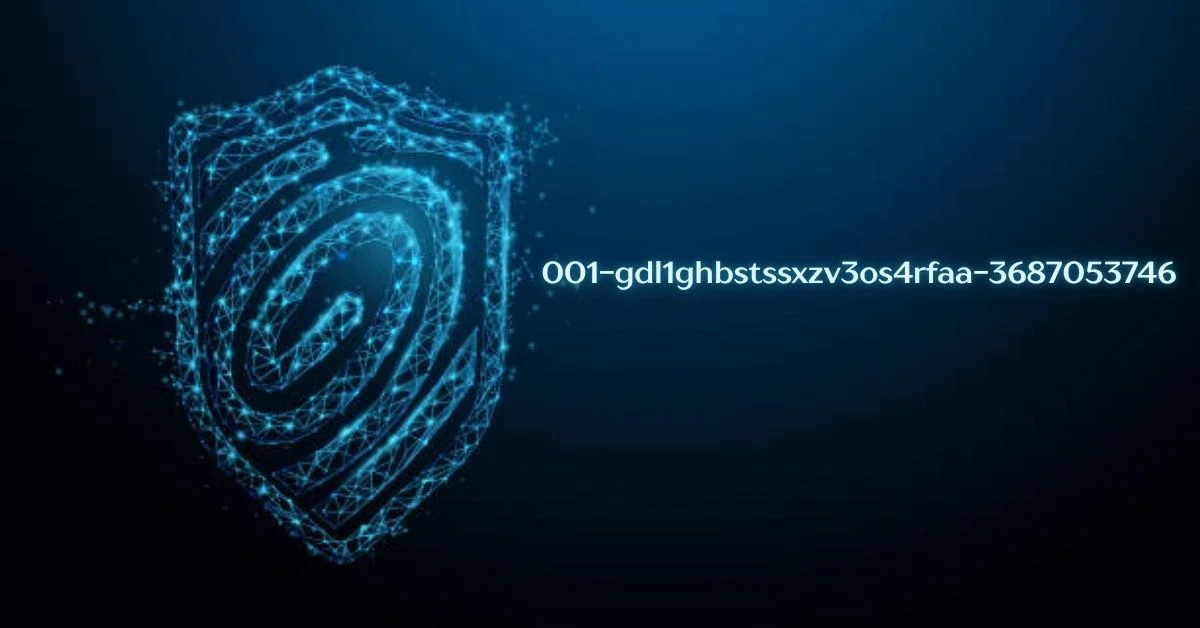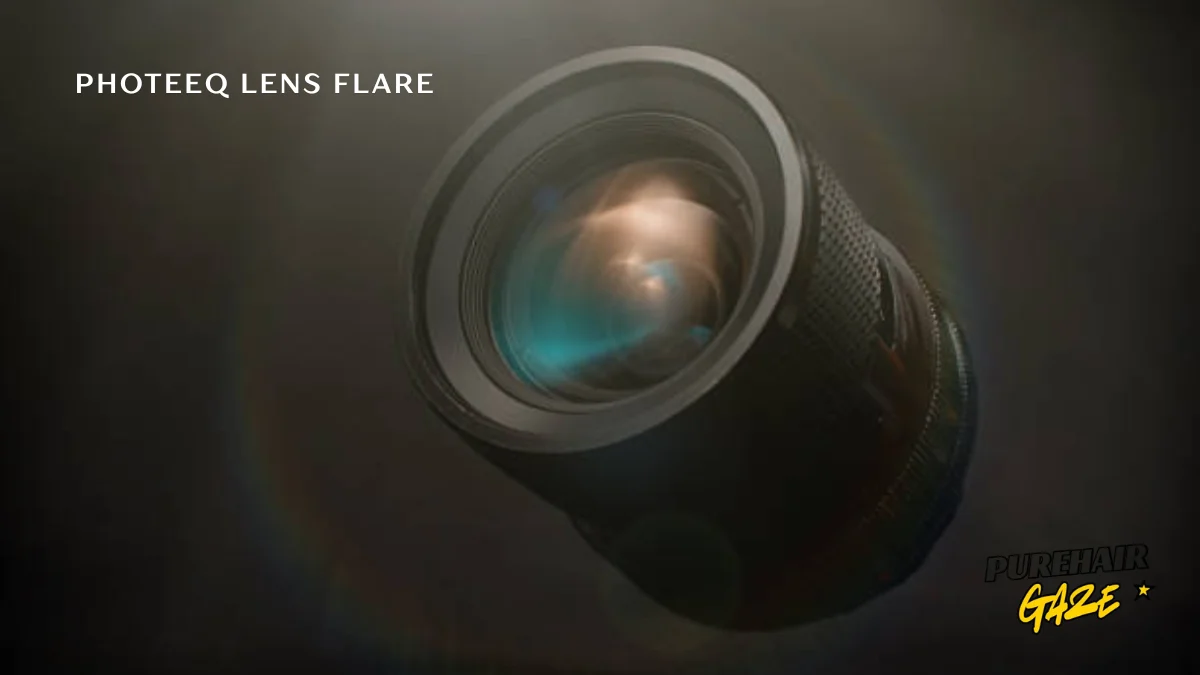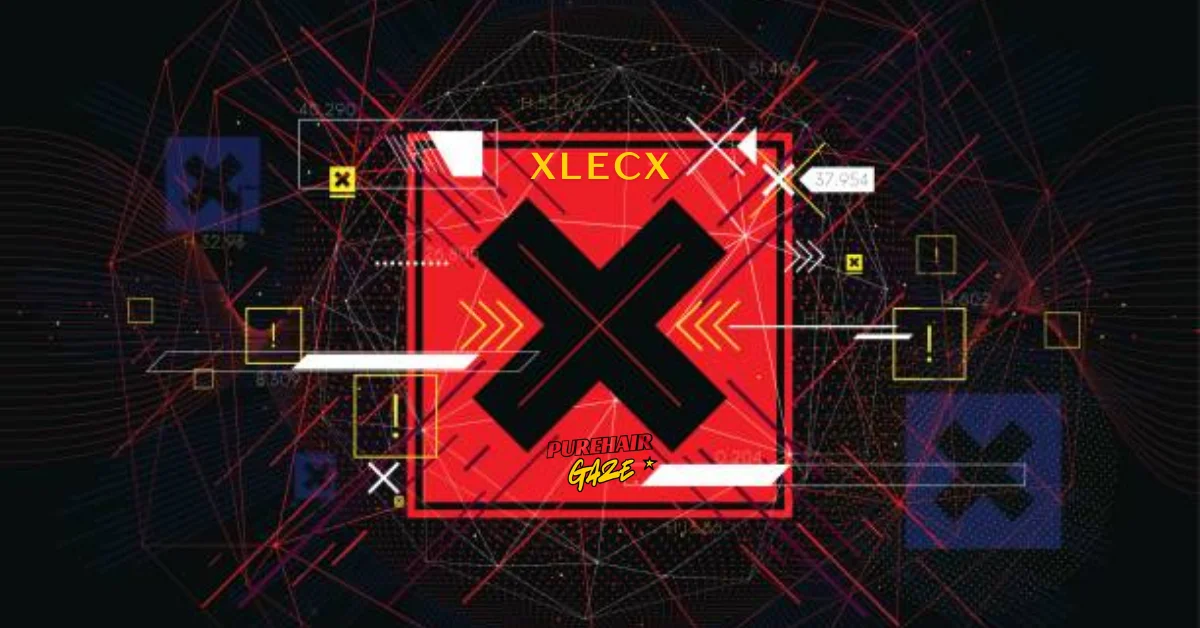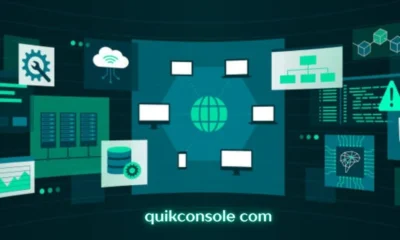Tech
001-gdl1ghbstssxzv3os4rfaa-3687053746: A Deep Dive into Encrypted Multi-Layer Identifiers for Modern Systems

Introduction to Encrypted Multi-Layer Identifiers
In an increasingly interconnected world, the need for secure and efficient identification systems has never been more critical. Enter Encrypted Multi-Layer Identifiers (EMIDs), a groundbreaking approach designed to enhance privacy and protection in modern digital environments. These identifiers offer a unique blend of security and functionality, making them ideal for various applications—from online transactions to access control in smart buildings.
Imagine a system that not only safeguards your data but also streamlines how we interact with technology. EMIDs are at the forefront of this evolution, addressing many challenges associated with traditional identification methods. Dive into the fascinating realm of EMIDs as we explore their advantages, generation processes, security measures, real-world applications, and what the future holds for this innovative technology. The journey promises insights that could reshape our understanding of digital identity management forever.
Advantages and Use Cases of EMIDs
Encrypted Multi-Layer Identifiers (EMIDs) provide unique benefits tailored to the evolving demands of contemporary data protection.Their layered structure ensures robust protection against unauthorized access, making them ideal for sensitive information.
One major use case is in healthcare systems. EMIDs can safeguard patient records while allowing seamless sharing among authorized personnel. This enhances trust and efficiency within the medical community.
Financial institutions also benefit from EMIDs. They provide a secure way to identify transactions without exposing personal details, reducing fraud risk significantly.
Moreover, e-commerce platforms are leveraging these identifiers for customer verification processes. By using EMIDs, businesses improve user experiences while maintaining high-security standards.
In IoT devices, EMIDs enhance device-to-device communication by ensuring each interaction remains confidential and verified. This paves the way for smarter homes and cities where data privacy is paramount.
How EMIDs are Generated and Managed
Encrypted Multi-Layer Identifiers (EMIDs) are generated through a sophisticated process that ensures both uniqueness and security. Initially, these identifiers rely on robust algorithms that create complex strings from various data inputs. This may include user information, timestamps, or device specifications.
Once the raw data is gathered, encryption techniques transform it into an unreadable format. These methods guard against unauthorized access while maintaining the integrity of the identifier.
Management of EMIDs involves continuous monitoring and updating to keep pace with emerging threats. Organizations typically employ dedicated software solutions designed for this purpose.
These systems allow for easy tracking and retrieval of EMIDs as needed, ensuring efficient use in various applications—from secure transactions to identity verification processes. Regular audits also play a key role in optimizing performance and enhancing security measures associated with EMID management.
Security Measures in Place for EMIDs
To ensure the integrity and safety of Encrypted Multi-Layer Identifiers (EMIDs), robust security measures are crucial. These identifiers incorporate advanced encryption techniques, making unauthorized access nearly impossible.
Each EMID is generated using complex algorithms that create unique sequences. This randomness enhances their resilience against potential cyber threats.
Additionally, multi-layer architecture adds another layer of protection. By compartmentalizing data and separating various identification layers, even if one layer is compromised, others remain secure.
Regular audits and updates to the encryption protocols keep these systems ahead of emerging vulnerabilities. Continuous monitoring helps identify any suspicious activities in real-time.
Moreover, employing machine learning can aid in detecting anomalies associated with EMID usage patterns. This proactive approach significantly mitigates risks while ensuring user privacy remains intact throughout the process.
Challenges and Limitations of EMIDs
Encrypted Multi-Layer Identifiers (EMIDs) are impressive, but they come with their own set of challenges. One major concern is the complexity involved in their implementation. Organizations must invest significantly in training and resources to properly manage EMID systems.
Another limitation lies in scalability. As businesses grow, maintaining a robust EMID framework can become burdensome. This often leads to potential bottlenecks that affect efficiency and performance.
Data integrity remains a pressing issue as well. Ensuring that identifiers remain unique while preventing unauthorized access or manipulation requires constant vigilance.
Moreover, technology evolves rapidly, posing compatibility issues with legacy systems. Integrating new standards into older platforms may hinder functionality if not managed carefully.
There’s the question of user adoption. Employees might resist transitioning to EMIDs due to unfamiliarity or perceived complexity, which can slow down deployment efforts across organizations.
Comparison with Other Identification Technologies
When examining Encrypted Multi-Layer Identifiers (EMIDs), it’s essential to compare them with existing identification technologies. Traditional methods, such as usernames and passwords, often fall short in terms of security. They are vulnerable to breaches via phishing schemes or brute-force hacking attempts.
Biometric systems offer another alternative, relying on unique physical traits like fingerprints or facial recognition. While biometric data is harder to replicate, privacy concerns abound regarding how this sensitive information is stored and handled.
In contrast, EMIDs provide a multi-layered approach that enhances both security and anonymity. By encrypting identifiers at multiple levels, they mitigate risks associated with data breaches while maintaining user privacy.
RFID technology also plays a role in identification but lacks the encryption features found in EMIDs. This makes RFID more vulnerable to unauthorized scanning and tracking.
Each technology has its strengths and weaknesses; however, the robust architecture of EMIDs positions them as a compelling choice for modern applications requiring heightened security measures.
Real-World Applications of EMIDs
Encrypted Multi-Layer Identifiers (EMIDs) have found their way into various sectors, transforming how we secure and manage data.
In the healthcare industry, EMIDs help protect patient identities while ensuring that vital information remains accessible to authorized personnel. This enhances privacy without sacrificing efficiency.
Financial services also leverage EMIDs to authenticate transactions securely. Customers benefit from an extra layer of protection against fraud in online banking and e-commerce platforms.
Moreover, in supply chain management, EMIDs provide unique tracking capabilities for products. They streamline logistics by enabling real-time monitoring while safeguarding sensitive information.
Even smart cities are adapting this technology. EMIDs facilitate seamless communication between interconnected devices, improving urban living through enhanced security and efficiency.
From healthcare to finance and beyond, the versatility of EMIDs is evident as they pave the way for innovation across multiple fields.
Future Developments and Possibilities for EMIDs
The future of Encrypted Multi-Layer Identifiers (EMIDs) holds immense promise. As technology advances, the integration of artificial intelligence could enhance their generation and management processes. This would allow for more sophisticated algorithms that adapt to changing security landscapes.
Moreover, as data privacy regulations evolve globally, EMIDs can play a pivotal role in compliance. They offer a way to protect user identities while still enabling essential communication between systems.
Blockchain technology might also come into play. Utilizing decentralized ledgers could further secure the creation and tracking of EMIDs, ensuring integrity and trustworthiness across platforms.
Emerging industries like IoT are set to benefit significantly from this innovation. With countless devices needing unique identification, scalable and secure solutions become paramount for seamless operation. The possibilities are vast, paving the way for smarter ecosystems in various sectors.
Conclusion
Encrypted Multi-Layer Identifiers (EMIDs) represent a significant advancement in how we manage identity and security in modern systems. As technology continues to evolve, the integration of EMIDs can provide enhanced protection and flexibility for organizations across various sectors.
The advantages of using EMIDs are evident in their ability to offer robust security, improved privacy, and streamlined processes. From healthcare to finance, businesses are already leveraging these identifiers to safeguard sensitive information while maintaining compliance with regulations.
Understanding how EMIDs are generated and managed is crucial for those looking to implement this technology. With strong encryption methods in place, along with strategic management practices, organizations can confidently navigate the complexities of digital identification.
Despite their many benefits, challenges remain. Organizations need to tackle possible constraints concerning scalability and system compatibility. However, ongoing advancements suggest that these hurdles will be overcome as demand for secure identification solutions grows.
As industries continue adopting EMIDs at an increasing pace, real-world applications demonstrate the practicality and effectiveness of this innovative approach. Future developments promise even greater capabilities, likely expanding the role of EMIDs within various fields.
The journey toward widespread adoption may still have some twists ahead but clearly points towards a future where Encrypted Multi-Layer Identifiers play a pivotal role in securing our digital identities comprehensively.

Tech
Photeeq Lens Flare: Exploring Artifacts in Modern Photography

Photography is more than just capturing moments; it’s about expressing emotions and telling stories. One fascinating element that can enhance your images is lens flare. This captivating effect can add drama, warmth, or a touch of magic to your photographs. Enter Photeeq Lens Flare a modern tool designed to help photographers harness the beauty of lens flares while maintaining control over their artistic vision.
As technology evolves, so does our understanding and application of effects like lens flare in photography. Whether you’re a seasoned pro or just starting out, exploring how Photeeq Lens Flare works might open new doors for creativity in your work. Let’s dive into this intriguing world where light meets art!
What is Photeeq Lens Flare?
Photeeq Lens Flare is a digital tool that allows photographers to create stunning lens flare effects with precision and ease. It combines the beauty of traditional lens flares with modern technology, giving artists control over how light interacts with their images.
This tool simulates various types of lens flares from subtle glow to dramatic bursts tailored for different styles and aesthetics. With Photeeq Lens Flare, you can enhance your photographs in ways that were once challenging or impossible to achieve during shooting.
Its user-friendly interface invites both beginners and experts alike to experiment without fear. Adjustments are intuitive, ensuring each effect complements rather than overwhelms the main subject of your photo.
By integrating this innovative software into your workflow, you unlock endless creative possibilities while elevating your photography game. The result? A captivating fusion of art and technology that redefines visual storytelling.
The Evolution of Lens Flare in Photography
Lens flare has a fascinating history in photography, evolving alongside technology and artistic vision. Initially seen as an unwanted artifact, it was often the bane of photographers striving for clarity and precision.
As cameras improved, the understanding of light became deeper. Photographers began to realize that lens flare could add depth and emotion to their images. It transformed from a nuisance into a tool for creativity.
In recent years, digital editing has expanded possibilities even further. The Photeeq Lens Flare effect allows artists to manipulate light intentionally, creating stunning visuals that blend realism with fantasy.
The modern photographer embraces these flares not just as accidents but as intentional elements that tell stories through light play. This shift reflects an ongoing dialogue between technology and artistry in capturing moments.
How to Achieve Lens Flare in Modern Photography?
To achieve lens flare in modern photography, start by positioning your light source strategically. A low sun or bright artificial light can work wonders.
Experiment with angles. Move around your subject until you find the sweet spot where the light bleeds into the frame, creating that desired flare effect.
Don’t shy away from using filters. A simple UV filter can soften harsh lights and enhance flares subtly without overwhelming your shot.
Consider post-processing techniques too. Software like Photoshop allows for digital lens flares that mimic natural ones, giving you more creative control over the final image.
Embrace spontaneity. Sometimes, an unexpected burst of light can create a stunning artifact that adds character to your photos. Capture those moments as they unfold; they might surprise you!
Embracing the Imperfections: Using Lens Flare as an Artistic Element
Lens flare is often seen as a flaw, yet it can transform an ordinary shot into something extraordinary. Photographers are increasingly recognizing its potential as an artistic element rather than just a distraction.
When light bursts through the lens, it creates unexpected shapes and colors. These artifacts add depth and emotion to images that might otherwise feel flat or lifeless. By embracing these imperfections, photographers can evoke feelings of nostalgia or dreaminess in their work.
Experimenting with different angles and light sources opens up endless possibilities. Each flare tells a unique story, making your photography more personal. It encourages spontaneity—capturing moments that are genuinely unplanned adds authenticity to your portfolio.
So don’t shy away from those flares; let them dance across your frame. Use them intentionally to enhance mood and atmosphere, making each image resonate on a deeper level with viewers.
Tips for Avoiding Unwanted Lens Flare
To maintain control over lens flare, start by adjusting your shooting angle. Small shifts in position can dramatically change how light interacts with your lens.
Using a lens hood is another effective strategy. It acts as a barrier against stray light, minimizing unexpected flares while enhancing contrast.
Choosing the right time of day matters too. Shooting during golden hour or on overcast days reduces harsh sunlight that often causes unwanted artifacts.
Cleaning your lens regularly helps as well. Dust and smudges can contribute to excessive glare, so keep it pristine for clearer shots.
Consider using polarizing filters selectively. They can help manage reflections and enhance color saturation without introducing distracting flares into the mix. With these tips in mind, you’ll achieve cleaner images while still harnessing creative potential when desired.
Exploring Different Techniques and Effects with Photeeq Lens Flare
Experimentation is key when using Photeeq Lens Flare. Start by playing with different light sources. Natural sunlight, neon signs, or even candlelight can create stunning effects.
Try varying the angle of your shot. A slight tilt can dramatically change how the lens flare interacts with your subject. This simple adjustment often leads to unexpected and captivating results.
Layering is another technique worth exploring. Overlay multiple images featuring different lens flares for a creative blend that adds depth and intrigue to your photography.
Don’t shy away from editing tools either. Post-processing allows you to enhance or manipulate the flare’s intensity, color, and shape, giving you control over its impact on the final image.
Consider combining lens flare with other elements like bokeh or silhouettes for unique storytelling in your photographs. Each combination opens new doors for creativity and expression in modern photography.
The Future of Lens Flare in Photography
The future of lens flare in photography promises a dynamic interplay between technology and creativity. As software advances, photographers can simulate various lens effects with precision.
Emerging tools allow for greater control over light sources and angles. This opens new avenues for experimentation, enabling unique artistic expressions that were once challenging to achieve.
Artificial intelligence could play a role as well. By analyzing images, AI might suggest optimal flare settings tailored to individual styles or scenes.
Moreover, collaborations between traditional techniques and modern digital processes will pave the way for innovative approaches. Photographers may blend real-life flares with post-processing enhancements to create surreal visuals.
As we move forward, the perception of lens flare is likely to evolve from mere artifacts into vital components of storytelling through imagery. Embracing this evolution will inspire photographers to redefine their creative boundaries continually.
Conclusion
Lens flare has become more than just an artifact in photography; it’s a bridge between reality and artistic expression. The Photeeq Lens Flare offers photographers the tools to harness this phenomenon fully, allowing for stunning visual storytelling.
As we embrace imperfections, lens flare can add depth and emotion to images. It challenges traditional norms of perfection in photography, encouraging creativity.
Modern techniques continue to evolve, pushing boundaries while still honoring the art form’s rich history. Photographers are now empowered with technology that not only celebrates but enhances these light anomalies.
The journey ahead is exciting as we explore new methods and applications for lens flare effects in our work. With platforms like Photeeq leading the charge, photographers have endless possibilities at their fingertips.
Whether you’re trying to achieve a specific mood or simply enjoy experimenting with light, understanding how to incorporate lens flare into your compositions will undoubtedly elevate your craft. Embrace the beauty of flaws after all, every great photograph tells its own story through light and shadow.
Tech
Spaietacle Insights: The Future of Dynamic and Immersive Events

Introduction to Spaietacle Insights
Welcome to the world of Spaietacle Insights, where events transcend the ordinary and dive into realms of engagement and excitement. Imagine walking into a space that pulses with energy, where every corner invites exploration and interaction. Dynamic and immersive events are not just trends; they represent a profound shift in how we connect, communicate, and celebrate.
As technology advances at breakneck speed, so too does our ability to craft experiences that captivate audiences like never before. From interactive installations to virtual reality environments, the landscape of event planning is evolving rapidly. With elements designed to enthrall attendees on multiple levels, these modern gatherings become unforgettable moments etched in memory.
Join us as we delve deeper into this fascinating subject—exploring how dynamic events have risen to prominence and what lies ahead for those daring enough to embrace innovation in their planning strategies. Together we’ll uncover insights that can elevate your next event from ordinary to extraordinary!
The Rise of Dynamic and Immersive Events
Dynamic and immersive events are transforming the landscape of gatherings. Gone are the days of passive attendance. Today, participants crave interaction and engagement.
These events invite attendees into a narrative. They become part of the experience rather than mere spectators. This shift has led to creative formats that blend entertainment with education.
From interactive installations to virtual reality experiences, innovation is at the forefront. Organizers aim to captivate diverse audiences in ways that resonate deeply with them.
As technology advances, so does the ability to create unforgettable moments. Event planners harness tools like augmented reality and live-streaming to enhance participation. The result? A richer connection between brands and their communities.
This evolution acknowledges changing consumer preferences, where personalization reigns supreme. Attendees seek unique experiences that reflect their interests and values, setting a new standard for what an event can be.
Technology’s Role in the Evolution of Events
Technology has revolutionized the event landscape. From virtual reality to augmented experiences, innovative tools have transformed how audiences engage.
Live streaming has become a staple. It allows those unable to attend in person to experience events in real time. This accessibility widens participation and enhances audience reach.
Interactive platforms also play a crucial role. Attendees can now participate through polls, Q&A sessions, or even gamification elements that boost engagement levels significantly.
Data analytics offers insights into attendee behavior and preferences. Understanding this information helps organizers tailor future events for maximum impact.
Moreover, social media integration fosters community building before, during, and after an event. Participants can share their experiences instantly, creating buzz and encouraging wider discussions online.
With these advancements continually evolving, technology is not just shaping events; it’s redefining our expectations of them altogether. The possibilities are limitless as we move forward into this dynamic space.
The Impact of COVID-19 on Events and the Shift towards Virtual Experiences
The COVID-19 pandemic dramatically reshaped the events landscape. Large gatherings became a risk, forcing organizers to rethink their strategies.
As doors closed, screens opened. Virtual experiences surged in popularity. From webinars to fully immersive online conferences, technology bridged the gap between brands and audiences.
Event planners had to adapt quickly. They explored innovative platforms that offered interactive features like live chats and breakout sessions. Engagement was no longer limited by physical presence.
This shift also created new opportunities for inclusivity. People from diverse backgrounds could participate without geographical constraints or travel expenses.
However, challenges remained. Maintaining energy and connection in a digital environment proved difficult at times. Event professionals learned that genuine interaction is essential, regardless of format.
Hybrid models emerged as a solution—a blend of virtual and in-person elements catering to various preferences and needs while paving the way for future innovations within spaietacle events.
Examples of Successful Dynamic and Immersive Events
Dynamic and immersive events are redefining the way we engage participants. One standout example is the “The Walking Dead Experience” in various U.S. cities. Attendees step into a live-action narrative, blending elements of theater with interactive gameplay.
Another innovative event is Coachella’s virtual festival experience, which included VR stages and digital art installations, creating an engaging environment for fans worldwide.
Cirque du Soleil’s OVO showcases how circus arts can be transformed into an immersive spectacle through stunning visuals and audience interaction.
In corporate settings, companies like Google have hosted dynamic product launches that incorporate augmented reality to elevate storytelling.
Each of these examples highlights creativity at its finest—engaging audiences on multiple sensory levels while leaving lasting impressions. The fusion of technology and storytelling enhances participation, making every moment memorable.
Tips for Event Planners and Organizers to Incorporate Dynamic and Immersive Elements
Know your audience well. Shape experiences around their interests and habits, using surveys or social media to gain insights.
Utilize technology wisely. Incorporate virtual reality and augmented reality to create engaging environments. Interactive displays can captivate attendees, making them part of the experience.
Design seamless transitions between activities. Flow is crucial in maintaining energy throughout the event. Create zones where guests can explore different themes without feeling lost.
Incorporate storytelling into every aspect of the event. This helps build emotional connections and keeps participants engaged from start to finish.
Encourage participation with hands-on workshops or live demonstrations. Immersive elements thrive on active involvement rather than passive observation.
Think about sensory experiences—lighting, soundscapes, and even scents can enhance immersion significantly if done thoughtfully.
Predictions for the Future of Events: What Can We Expect?
The future of events is set to be transformative. As technology advances, we can expect an even greater blend of physical and digital experiences. Augmented reality (AR) will likely play a significant role in engaging attendees in new ways.
Virtual reality (VR) may become commonplace, allowing participants to immerse themselves without geographical limitations. Imagine attending a conference from the comfort of your home while feeling as though you’re right there among peers.
Sustainability will also shape event planning more than ever before. Eco-friendly practices are no longer optional; they’re expected by conscientious attendees who value green initiatives.
Personalization will take center stage too. Tailored experiences based on attendee preferences could enhance engagement and satisfaction levels tremendously.
As we look ahead, collaboration between tech innovators and event planners will drive the next generation of dynamic gatherings. Exciting possibilities await those willing to embrace change!
Conclusion
Dynamic and immersive events are reshaping how audiences engage with experiences. As technology continues to evolve, the opportunities for creativity in event planning expand. Spaietacle encapsulates this trend by highlighting innovative strategies that captivate attendees.
The rise of virtual experiences has paved the way for new formats and interactions, ensuring that distance does not diminish engagement. The examples showcased demonstrate just how powerful these immersive encounters can be when executed thoughtfully.
For event organizers ready to embrace change, integrating dynamic elements can set their events apart. By focusing on interactivity and personalization, planners can create memorable moments that resonate long after they conclude.
Looking ahead, we find ourselves at a pivotal moment where imagination meets technology. Embracing the possibilities offered by spaietacle will be essential as we navigate this exciting future of events—one where every experience is an opportunity to connect deeper with audiences around the globe.
Tech
xlecx: Exploring Trust, Safety Signals, and Web Reviews

Introduction to xlecx
In the rapidly evolving digital landscape, trust and safety have become paramount for businesses and consumers alike. Enter xlecx, a platform designed to bridge the gap between companies and their audiences. As we navigate online interactions, the need for assurance in our choices has never been greater.
xlecx stands out by not just connecting users but also fostering an environment where trust thrives. By leveraging essential signals of safety, it cultivates relationships that empower both businesses and customers to make informed decisions with confidence. Join us as we explore how xlecx is redefining reliability in the digital world through innovative features and authentic web reviews that truly matter.
Understanding Trust and Safety Signals
Trust and safety signals are essential components of online interactions. They help users gauge the reliability of a platform or service. In an era where scams and misinformation proliferate, these signals offer peace of mind.
Common indicators include user reviews, verification badges, and clear privacy policies. Each element builds confidence among potential users. Observing positive feedback from others reassures customers and strengthens their confidence in purchasing decisions.
Moreover, transparency plays a crucial role. Platforms that openly communicate their safety measures create stronger bonds with users. This fosters loyalty and encourages ongoing engagement.
In essence, trust signals not only protect consumers but also enhance brand reputation for businesses. With each signal reinforcing credibility, companies can cultivate a safer digital environment for everyone involved.
The Importance of Web Reviews for Businesses
Web reviews have become a cornerstone for businesses looking to establish credibility. Buyers usually depend on shared opinions and past experiences when choosing what to purchase. A single positive review can sway potential buyers, while negative feedback can deter them.
For small businesses, these testimonials serve as social proof. They validate services and products, instilling trust in hesitant shoppers. Every comment counts; they shape perceptions and influence brand image.
Moreover, web reviews enhance SEO rankings. Search engines favor sites with genuine customer feedback, boosting visibility online. This increased exposure leads to more traffic and ultimately higher sales.
Engaging with reviewers—both positive and negative—demonstrates that a business values customer input. It fosters community relations and encourages repeat customers who appreciate responsive brands. In today’s digital landscape, neglecting web reviews could mean losing out on valuable opportunities for growth.
How xlecx Utilizes Trust and Safety Signals in its Platform?
xlecx stands out by embedding trust and safety signals directly into its platform. This approach fosters a secure environment for users, enhancing their overall experience.
The platform employs advanced verification techniques to ensure that businesses are legitimate. By showcasing verified profiles, xlecx instills confidence among potential customers.
User feedback plays a crucial role in this ecosystem. Ratings and reviews from previous clients help highlight reliability and service quality. These insights serve as powerful indicators of trustworthiness.
Additionally, xlecx monitors activities closely to detect any unusual patterns or behavior. This proactive stance minimizes risks associated with online interactions.
By integrating these elements seamlessly, xlecx creates an atmosphere of transparency. Users can navigate the platform knowing that their safety is prioritized at every step.
Case Studies: Success Stories from Businesses Using xlecx
Many businesses have found success by leveraging the features of xlecx. One standout case is a local bakery that struggled with its online presence. After utilizing xlecx’s trust signals, they saw a significant boost in customer engagement and foot traffic.
Another example involves an e-commerce store specializing in handmade crafts. By incorporating web reviews facilitated through xlecx, they transformed their reputation overnight. Positive testimonials showcased their products’ quality, driving sales higher than ever before.
A tech startup also benefited immensely from xlecx’s safety signals. They established credibility quickly through verified reviews and transparent communication, leading to increased investor interest.
Each story reflects how diverse businesses can thrive when they harness the power of trust and authenticity rooted in genuine consumer feedback on platforms like xlecx. It highlights the transformative potential for brands ready to embrace innovative solutions in today’s digital landscape.
Tips for Writing Effective and Authentic Web Reviews
When crafting web reviews, authenticity shines through. Share personal experiences rather than generic observations. This makes your review relatable.
Be specific about what you liked or didn’t like. Instead of saying a product is “great,” explain how it improved your daily routine or solved a problem for you.
Keep the tone conversational and friendly. Write as if you’re sharing insights with a friend, making it approachable.
Don’t shy away from constructive criticism. Pointing out where improvements are needed fosters credibility with buyers while giving businesses meaningful insights.
Length matters too stay concise but informative. Readers appreciate brevity that still conveys essential details without overwhelming them.
Avoid exaggerations and hyperbole; honesty builds credibility in an era where consumers seek genuine opinions before making decisions.
Conclusion: The Power of Trust, Safety Signals, and Web Reviews in the Digital Age
The digital landscape is evolving, and so are consumer expectations. Trust and safety signals have become essential in building confidence for users navigating online platforms like xlecx. For businesses aiming for growth, the value of web reviews plays an undeniable and critical role. They serve as a powerful tool, influencing potential customers’ perceptions and decisions.
xlecx stands out by effectively integrating these critical elements into its platform. By prioritizing trustworthiness and fostering an environment that encourages authentic feedback, it generates not only engagement but also loyalty among users.
For businesses eager to succeed in today’s competitive market, embracing the principles of trust and leveraging genuine web reviews can lead to remarkable outcomes. The stories shared by various enterprises utilizing xlecx highlight this dynamic relationship between credibility and success.
As we move forward in this digital age, harnessing the power of trust signals alongside customer feedback will remain vital. Businesses that acknowledge their importance while staying transparent will cultivate stronger relationships with their audience—one review at a time.
-

 Sports5 months ago
Sports5 months agoTennessee Titans vs Texans Match Player Stats: Game Analysis & Top Performers
-

 Tech5 months ago
Tech5 months agoQuikconsole Com: Revolutionizing Web-Based Server Management for Devs and Sysadmins
-

 General4 months ago
General4 months agoUnited Airlines Flight UA770 Emergency Diversion Explained
-

 Business4 months ago
Business4 months agomyfastbroker .com Guide: Find Trusted Brokers for Smart Trading
-

 General4 months ago
General4 months agoSimbramento: Ancient Art of Mindfulness, Movement, and Flow
-

 Business5 months ago
Business5 months agoCrypto 30x .com Guide: High-Leverage Trading Risks & Insights
-

 Entertainment4 months ago
Entertainment4 months agoهنتاوي.com: Gateway to Arabic Content and Tech Evolution
-

 Business5 months ago
Business5 months agoFintechzoom.com Bonds: Smart Investing for Modern Times


